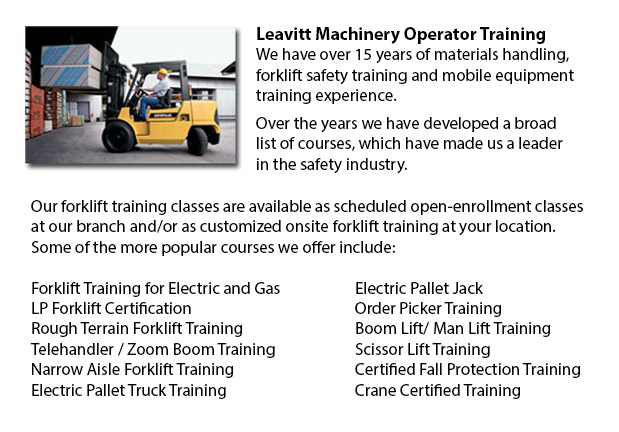
Pallet Stackers Training Richmond Hill - A pallet stacker is a variety of pallet jack that is used to move, stack and lift palletized merchandise that are too difficult for manual lifting. Its main function is to load and unload pallets on vehicles, and also transferring pallets to and from an assortment of locations within a storeroom space or stockroom. On the whole pallet stackers are manufactured of heavy duty materials to hold up extreme weights. Pallet stackers are sometimes identified as pallet jacks. They can be operated from a seated, upright or walk-behind position. Pallet stackers are separated into manual and powered styles.
Some fundamental parts comprise the pallet jack. There are forks that slide under a pallet, capable of transporting and lifting it to a preferred height. The engine section or casing houses the gas-run, electronic or hydraulic equipment that powers the piece of equipment.
Manual pallet stackers are hand-powered. They run hydraulically to make hauling tedious pallets an easier job. Usually a walk-behind version meaning they are operated by pulling and pushing the stacker to its preferred location. Utilizing a foot pedal or handle raises the stacker's forks. Squeezing a handle or trigger returns the forks to the floor. These models of pallet jacks are perfect for lighter loads of up to approximately 1 ton or 907.18 kg.
Most stackers can accommodate the raising of extreme weights to around 5 tons with either the gas or electric models. They are physically less demanding to maneuver than the manual models thanks to the hydraulic power that elevates and lowers the forks. These versions are steered by turning the handle in a particular direction. There is a button on the knob that operates to lift and lower the forks. A throttle set up on the stacker's grips moves the appliance forward and in reverse. This variety of equipment is regularly referred to as a forklift and is used from a sit-down position.
Selecting the correct model of pallet stacker can be quite critical as models will have varying lift functionality, together with varying fork widths. Some models of stackers may only tolerate two pallets to be loaded at one time, whilst other versions may be able to load many pallets. Some types of these forklifts feature an changeable fork in order to allow the jack to slide beneath pallets of different sizes and shapes. Numerous fork models may be fairly successful when different types of pallets are being used in the same warehouse.
-
Hyster Forklift
Hyster Forklift Training Richmond Hill - As a global leader in forklift trucks, Hyster continually strives for excellence in product quality and safety. However, it began as a producer of lifting machinery as well as winches. Most of its production... More -
Nissan Forklift
Nissan Forklift Training Richmond Hill - Nissan takes immense pleasure in achieving total customer satisfaction, when their consumer is experiencing one of their many products including cars, trucks, and lift trucks. Nissan Motor Co. Ltd is the paren... More -
Scissor Pallet Trucks
Scissor Pallet Truck Training Richmond Hill - Scissor pallet vehicles are made for transporting and lifting individually stacked pallets by integrating a raising mechanism that enables the pallets on the truck to be elevated. This apparatus is a firs... More -
Pneumatic Forklifts
Pneumatic Forklifts Training Richmond Hill - Pneumatic jacks are often called pallet trucks or pump trucks and are widely utilized in warehouses and transport facilities to transport materials on pallets. Pneumatic jacks comprises a set of steel blad... More -
Aerial Lifts
Aerial Lift Training Richmond Hill - Aerial forklifts might be utilized to accomplish certain distinctive tasks executed in hard to reach aerial places. Some of the duties associated with this type of lift include performing routine repair on buildin... More

Forklift Training Richmond Hill
TOLL FREE: 1-888-254-6157
Richmond Hill, Ontario
forklifttrainingrichmondhill.com
Email Us
About Us


